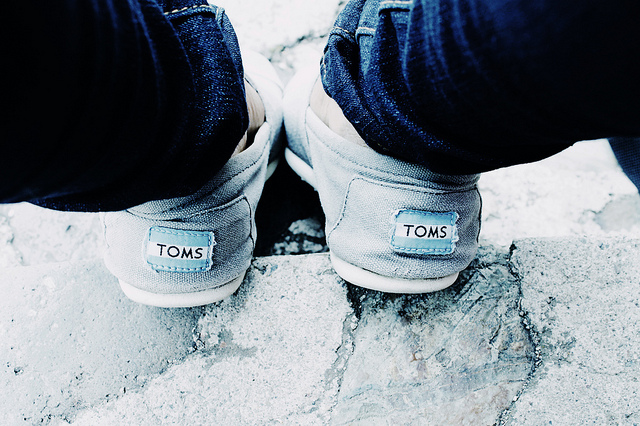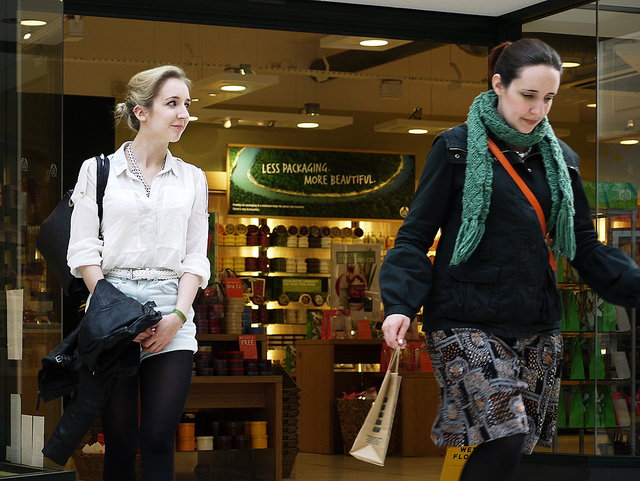Unlock the Magic in Your Story Now
Get the Free 20 questions to Ask Before Launching Your Idea workbook when you sign up for occasional updates.
Get the Free 20 questions to Ask Before Launching Your Idea workbook when you sign up for occasional updates.
Articles filed in: Storytelling
The Forgotten Purpose Of Brand Stories
filed in Marketing, Storytelling, Strategy
 Most of what we describe as marketing and brand storytelling—what we do in order to grow our businesses, is designed to help us to find more customers.
Most of what we describe as marketing and brand storytelling—what we do in order to grow our businesses, is designed to help us to find more customers.
What if we flipped that thinking on its head and thought about our stories as the way we help people to find us?
There’s a subtle difference.
When your main goal is to find the most people, you grasp at every straw and you dilute your message. You fail to stand for something or to draw a line in the marketing sand which you refuse to cross. You shoot for quantity over quality.
When your goal is to help people to find you, a subtle shift in your posture takes place. You, as Krista Tippett describes, stop shouting to be heard and start listening to understand. You actively look for ways to stand out to the right people, instead of trying to appease the majority. And most important of all you begin to measure things that matter to your customers beyond traditional metrics and the single bottom line.
Image by Luvia Lazo..
What Are You Here To Do?
filed in Marketing, Storytelling, Strategy
 When Deborah Thomas, newly minted CEO of Ardent Leisure, was asked if she knew how to operate a roller coaster, she probably gave an inward sigh along with her considered response.
When Deborah Thomas, newly minted CEO of Ardent Leisure, was asked if she knew how to operate a roller coaster, she probably gave an inward sigh along with her considered response.
“I’m not here to operate the roller coaster; I’m here to make sure that people queue up and want to spend their money to take a ride on it.” she said.
Of course it takes more than knowing how to pull the lever to keep the roller coaster moving.
It’s easy to get caught up attending to someone else’s agenda, to spend time micro-managing, or lose yourself in the day’s minutiae. It feels good to respond to email, discuss tactics and to be kept busy. But you need to be clear about your own priorities. Once you prioritise and show others how to do that too everybody knows how to play their part.
What are you really here to do?
Image by Massachusetts Tourism.
The Shortcut To More
filed in Marketing, Storytelling, Strategy
 It’s probably safe to assume that at some point in the past few months you’ve wondered how to get more traffic, customers, subscribers, Facebook likes, retweets, awareness, sales, exposure and on and on. Because the job of traditional marketing is to convince and convert, we are used to beginning our marketing journey there.
It’s probably safe to assume that at some point in the past few months you’ve wondered how to get more traffic, customers, subscribers, Facebook likes, retweets, awareness, sales, exposure and on and on. Because the job of traditional marketing is to convince and convert, we are used to beginning our marketing journey there.
What if you flipped your thinking on its head? Now instead of beginning your internal marketing dialogue by wondering how you might change what people do, you can start by wondering what change you’re trying to create instead.
Start by listing three reasons why the people you want to serve will pass a competitor and cross the road to buy from you.
Once you get clear about the difference you create for people, the marketing strategy becomes obvious. The shortcut to more is to matter.
Image by Garry Knight.
Company Culture And The Ripple Effect
filed in Storytelling, Strategy
 By the age of six months, a baby begins to understand that his actions can affect his environment.
By the age of six months, a baby begins to understand that his actions can affect his environment.
It’s amazing how as adults we quickly unlearn this.
As business leaders when we talk about shaping or changing company culture we sometimes forget to own the fact that we are the culture. Culture is not something that is laid down in a strategy document, or changed in the blink of an eye at an offsite event designed to rally the troops. Culture is how we act every day. It’s impacted by how we as individuals choose to behave and evidenced in the ripple effect that our actions catalyse.
When we seek change we often start by looking to see what we can change in others, forgetting that the ripples begin right where we are.
Image by Dave Goodman.
Shortcuts Are Overrated
filed in Storytelling, Strategy
 A map works even though the cartographer hasn’t described how every step should be taken.
A map works even though the cartographer hasn’t described how every step should be taken.
We get to where we want to go when we have a good reason for going there.
Tactics are useless without a strategy.
Shortcuts are overrated.
Results take time.
Why hurry?
Image by Franco Folini.
The Purpose Of Clever Packaging
filed in Marketing, Storytelling, Strategy
 If you love chocolate as much as I do you’ve probably heard about the Mast Brothers scandal.
If you love chocolate as much as I do you’ve probably heard about the Mast Brothers scandal.
The artisan chocolate makers are accused of not being completely transparent about their process when they launched in 2007 and of pulling the wool over customers eyes with “clever packaging”.
Transparency aside for a moment, because of course what’s inside the wrapper has to fulfil the promise the packaging makes. Packaging should be clever and intentional. If we’re not deliberately trying to create a connection with our customers in everything we do then what’s the point? Wrappers are the opening line of the brand story.
The ‘once upon a time’. The first thing the customer notices, touches and experiences.
The story we give her to tell, (often to herself).
The inconspicuous red sole of a Christian Louboutin shoe. The encouraging manifesto on a Lululemon bag. The highly researched and purposefully created unboxing experience of an Apple product. And yes, the gorgeous paper on a Mast Brothers chocolate bar—all clever packaging that customers are happy to pay for because of how it makes them feel.
Intangible value is something customers crave. The question packaging design must address isn’t how to charge more for average stuff, it’s how to change what the customer feels.
Image by Jen Collins.
 Average marketing…..
Average marketing….. A colleague in the university sector was attending a marketing event. The presenter’s first slide showed a university’s promotional materials—complete with the typical ‘DREAM LARGE’ and ‘DESIGN THE FUTURE’ type tagline. He then polled the audience, asking if they knew which university it was. A ten minute debate ensued. Many delegates thought it was definitely Melbourne University. Others guessed it was Sydney or University of Queensland, a handful plumped for other lesser-known institutions.
A colleague in the university sector was attending a marketing event. The presenter’s first slide showed a university’s promotional materials—complete with the typical ‘DREAM LARGE’ and ‘DESIGN THE FUTURE’ type tagline. He then polled the audience, asking if they knew which university it was. A ten minute debate ensued. Many delegates thought it was definitely Melbourne University. Others guessed it was Sydney or University of Queensland, a handful plumped for other lesser-known institutions. The cafe was tiny and packed.
The cafe was tiny and packed. When we market our products to customers we often use a persuasive tone designed to convince. We describe by leading with features and benefits. We try hard to give customers reasons to choose, forgetting that most purchasing decisions are not rational, but emotional.
When we market our products to customers we often use a persuasive tone designed to convince. We describe by leading with features and benefits. We try hard to give customers reasons to choose, forgetting that most purchasing decisions are not rational, but emotional.